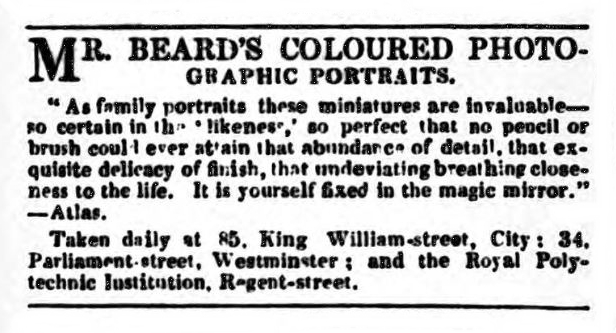| |
Charlotte Bronte & Photography
|
|
Charlotte Bronte is thought to have been the first author to use the verb
'daguerreotype' in a novel, in Shirley, published in October 1849. Seven years earlier,
in 1842, Charlotte and Emily were in Brussels when the first two photographic studios in
Belgium opened there. By the time they had returned to England the first studios in Yorkshire had
been established and by the late 1840s there were ten. In January 1848, about four
weeks after her sisters' novels had been published, Charlotte was using the word
"daguerreotyped" in correspondence.
|
"I had not seen Pride and Prejudice till I
read that sentence of yours, and then I got the book. And what did I find? An accurate,
daguerreotyped portrait of a commonplace face a carefully-fenced,
highly-cultivated garden, with neat borders and delicate flowers; but no glance of a bright,
vivid physiognomy, no open country, no fresh air, no blue hill, no bonny beck. I should hardly
like to live with her ladies and gentlemen, in their elegant but confined
houses."
Charlotte Bronte to G H Lewes; 11
January, 1848.
|
"The curates and their ongoings are merely photographed from the
life."
Charlotte Bronte to William Smith
Williams; Haworth 2 March 1849.
|
"Caroline saw a shape, a head that,
daguerreotyped in that attitude and with that expression, would have been
lovely"
"And when she could look up she did, and there was Robert himself close behind, smiling at her
eagerness, looking better than she had ever seen him look looking, indeed, to her partial eyes,
so very handsome, that she dared not trust herself to hazard a second glance ; for his image
struck on her vision with painful brightness, and pictured itself on her memory as vividly as
if there daguerreotyped by a pencil of keen lightning."
1.
From Charlotte's novel
Shirley, published October 1849.
|
"a distinct daguerreotype of the two days I spent in
Scotland."
Charlotte to William Smith Williams; Haworth,
20 July 1850
|
|
An
early photograph of Joseph Taylor, brother of Charlotte's friend Mary Taylor,
existed in 1854 and had been seen by Charlotte.1. This could have been a
daguerreotype (a photo on a silvered copper plate) or one of the new 1850s collodion
photos on glass. For several
decades after daguerreotypes had ceased to be produced the term "daguerreotype" was
used by many people to mean
"photograph."
"I believe he will change for the better and perhaps in two
months time he will be well enough to argue with all imaginable perversity and even to wear
that expression seen in his daguerreotype portrait."
Charlotte Bronte to Amelia Taylor; December
1854.
|
|
Footnotes
|
|
|
1. There is another possible reference in
Shirley:
"Mr. Yorke, if
a magic mirror were now held before you, and if therein were shown you your two daughters as
they will be twenty years from this night, what would you think?"

"It is yourself fixed in the magic mirror." Advert in The Atlas, 1842
In the 1840s daguerreotypes were sometimes referred
to and marketed as "magic mirrors" because of the mirror-like surface. They really were
magic for people who lived through this decade but they could only show you the
past. For other descriptions of these early photographs -
in an advert - see the publicity for the Leeds Photographic
Portrait Gallery, 1842.
2. Joseph Taylor is the character of Martin Yorke in Charlotte's novel
Shirley.There is no
evidence that Joseph Taylor was a photographer but he was an industrial chemist and many
chemists experimented with photography. John Jabez Mayall of Slaithwaite is an example of an early photographer who had
studied chemistry; his father was a manufacturing
chemist. Other early photographers had previously been artists, engravers. opticians or
makers of optical equipment.
|
|
|
|

